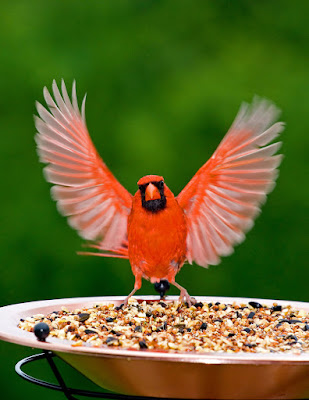Feed Me Please
This is the time of year when many people take down their bird feeders and store them away for the winter. Many fear that feeding the birds in the winter keeps them from migrating further south, or makes them dependent on the easy meals. Fact of the matter is, you could put a hundred feeders in your yard, but once the migratory clock is triggered, even the best seed can’t keep them from moving on. Think of your feeder, in the winter, is a rest stop for migrating birds, heading further south. The stragglers that do remain are either injured or sick and probably wouldn’t survive the winter. As to worrying if birds will lose their natural ability to find food after relying on bird feeders; what few studies have been done on the subject have found that birds are very resourceful and have no problem finding food on their own. Mother Nature has made sure that ability is not forgotten. Bird feeders only make up 20 percent of a bird’s daily energy requirements. But if you would rather not have to trudge out into the cold to fill the feeder every day, there are plenty of other ways to help out those feathered friends. Leaving perennial seed heads till spring pruning will provide a meal for some birds and the scattered seeds may provide you with a few more plants next year.
Plant
some holly bushes; the bright berries are beautiful in arrangements or wreaths
and loved by birds. If you have been
meaning to pull that Polk-berry weed out of the garden since fall, go ahead and
leave it for a while longer; the mockingbirds have been boisterously enjoying
mine. The red fruit of the dogwood make
for a good winter meal and junipers and cedars not only have berries but
provide needed winter shelter for the birds.
So whether you keep your feeder filled
with seed or your yard filled with berries, you will be able to enjoy birds all
year long. The robins of spring are
always a welcome sight, but outshined by the cardinals in winter.

Comments
Post a Comment